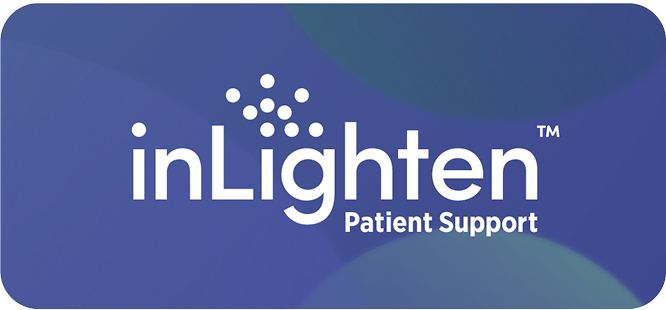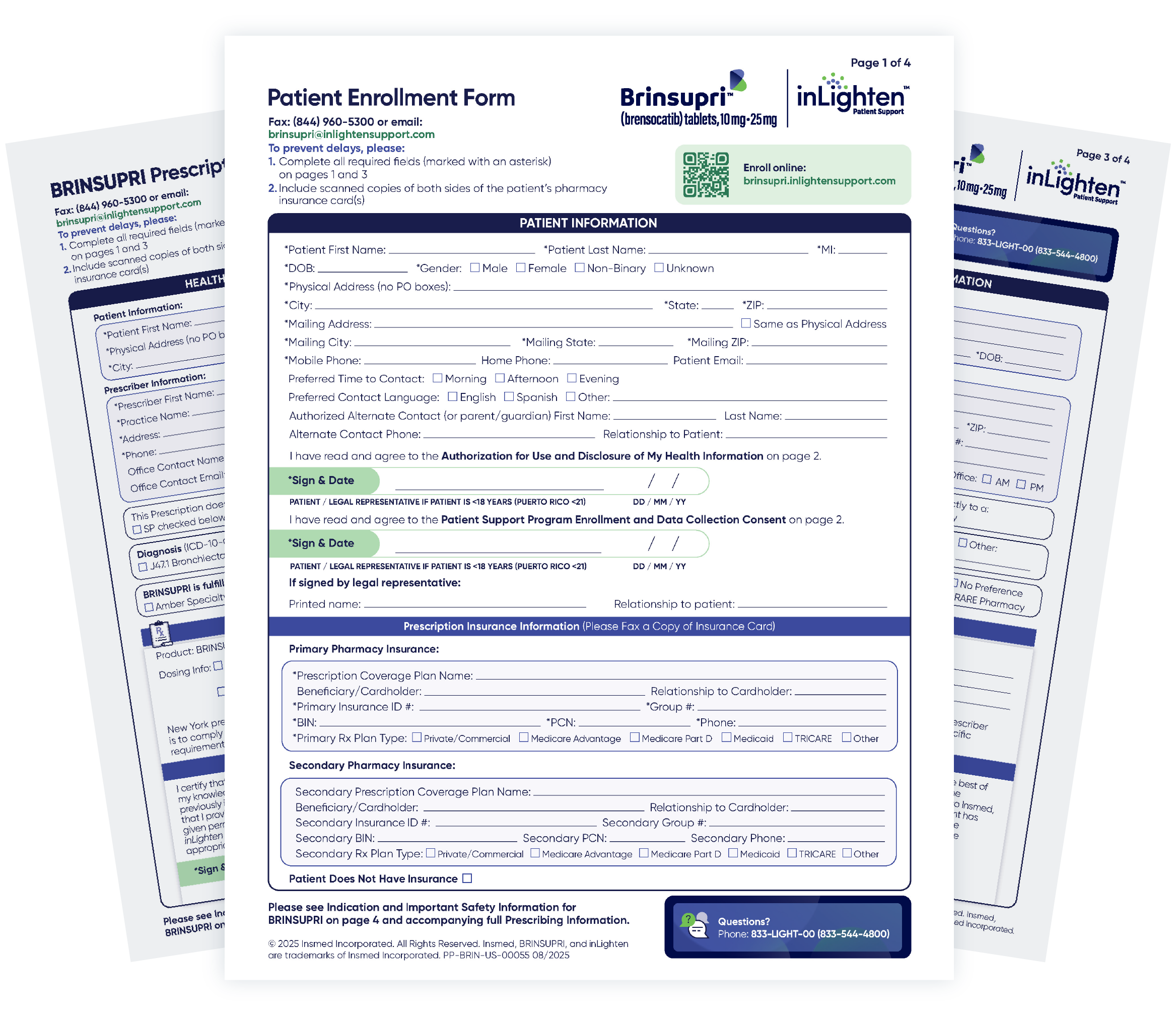
The inLighten™ Patient Support program offers enrolled patients dedicated support and education
When prescribed BRINSUPRI and enrolled in inLighten, patients will receive a call from their inLighten team. Patients will also be contacted by their specialty pharmacy.
inLighten Coordinators are available on a one-to-one basis to serve as a dedicated support resource for your patients during their treatment initiation, including:
Keeping them informed of the payer approval process
Understanding the role of the specialty pharmacy, including coordinating medication shipments
Providing information about the resources and education available throughout their journey
inLighten Coordinators keep patients informed about next steps and can answer questions they may have related to their delivery of BRINSUPRI.
While continuing on BRINSUPRI, patients will have follow-ups from inLighten Coordinators who can provide support along the way. If you wish, you can also receive status updates for your enrolled patients.
inLighten and inLighten Coordinators can be reached at 833-LIGHT-00 (833-544-4800), Monday through Friday, from 8 AM to 8 PM ET
Patients should also save this number in their phone as inLighten Patient Support
Ready to help patients enroll in inLighten?


Patients can receive support from inLighten by:
Completing and signing the enrollment form in-office
Enrolling at brinsupri.inlightensupport.com
Calling 833-LIGHT-00 (833-544-4800) Monday through Friday, from 8 AM to 8 PM ET and speaking with an inLighten Coordinator
You can help patients already prescribed BRINSUPRI sign up for the support program by completing the inLighten enrollment form with them.

Get the BRINSUPRI Prescription and inLighten Enrollment Form.
Where can my office go with questions?
We’re here to help. You can ask to speak with a representative about BRINSUPRI or a Field Access Manager about coverage and access questions for BRINSUPRI.a